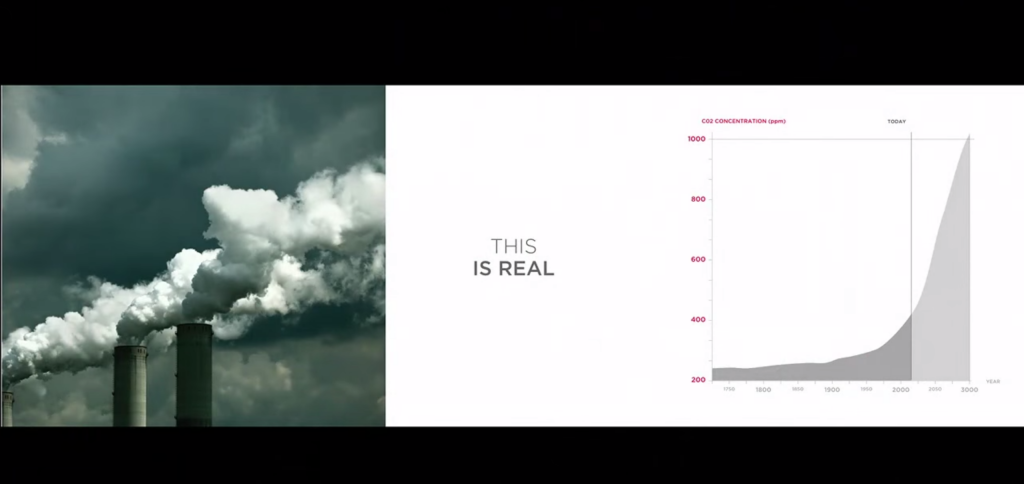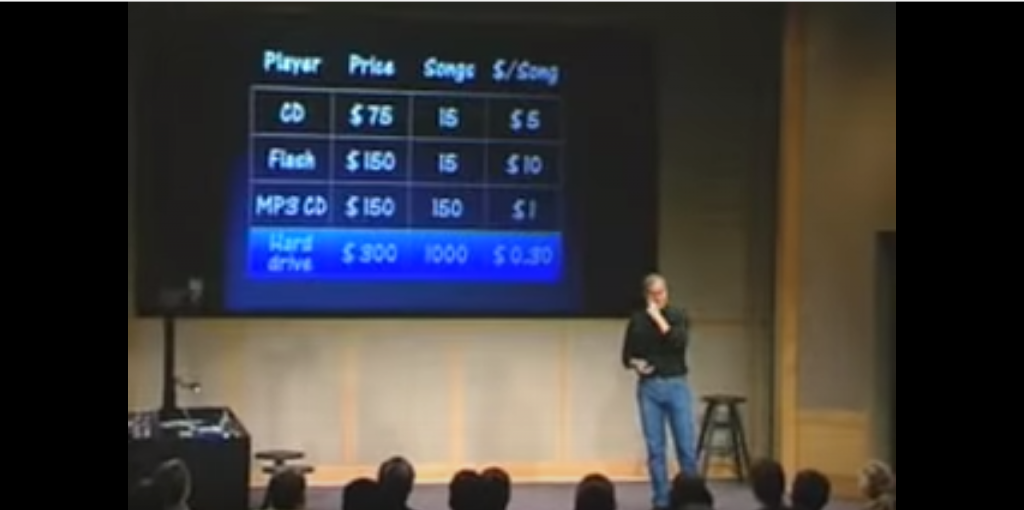1. Start your sales presentation by answering the question why
Why are we here? What is the problem that we are here to solve?
As said, some of your customers are aware of the problem, but some of them are not. Therefore your sales presentation should include a clear and vivid description of the problem that exists in the daily life of your customer.
Below you can see a couple of screenshots from the beginning of Tesla Powerwall keynote presentation. As you can see Elon Musk makes a thorough job to state why there is a need for new solutions for energy production.
Although the setting of Musk’s presentation differs from a typical day-to-day sales meeting, the same principle applies: You cannot sell a solution before you have sold the problem.
2. Create urgency for change
If you managed to get your customer nodding on your definition of the problem you have made it to the first base. Sometimes, just stating the problem is not enough to advance the sale. You also need to sell the urgency to change something.
For your customer, there is a cost in changing something in their daily life and by principle people don´t like change if it is not necessary.
Therefore you need to tell your customer what is the cost of not addressing the problem.
- How much money do they lose daily?
- How many sales opportunities are missed daily?
- Why do they risk losing to their competitors?
Your product or service has features, these features lead to advantage in comparison to the existing or competing solutions, and this advantage creates a benefit for the customer.
The first introduction of the iPod was a great example on the use F-A-B.
- Feature – a portable mp3 player with the biggest storage space in the market
- Advantage – The cost of the device divided by the number of songs it holds is the lowest compared to anything in the market
- Benefit – One thousand songs in your pocket
4. Own the next step
Finally, when you have sold the problem, created the urgency to change and stated the benefits of your solution, you want to finish strong. Therefore it is necessary that you take the initiative of defining the next step before your presentation and sales meeting is over.
If the deployment of your product or solution is more or less same from one case to another, you can even include the nexts step that will naturally move the opportunity forward as part of your presentation.
This is how you can outline your sales presentation. As said in the beginning, this not how you should give the presentation each and every time. You need to adapt your presentation for each meeting. Here you can find some further reading about how you should approach giving a sales presentation.
If you liked this, you may enjoy these too



